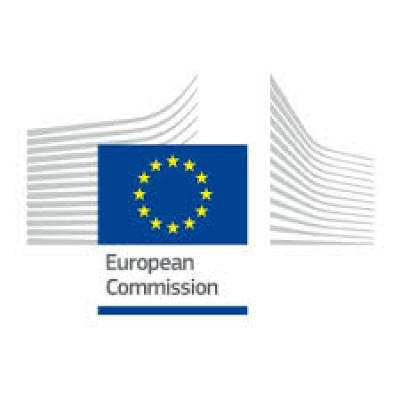
Addressing Building Related Interventions in Vulnerable Districts
Details
Description
Call Updates
Mar 20, 2023 3:30:27 PM
CALL UPDATE: FLASH EVALUATION RESULTS
EVALUATION results
Published: 17.05.2022
Deadline: 16.11.2022
Available budget: 98 000 000 EUR
The results of the evaluation are as follows:
Call LIFE-2022-CET-ENERPOV:
Number of proposals submitted (including proposals transferred from or to other calls): 10
Number of ineligible proposals: 3
Number of above-threshold proposals: 3
Total budget requested for above-threshold proposals: EUR 5.594.070,15
We recently informed the applicants about the evaluation results for their proposals.
For questions, please contact CINEA-LIFE-CET@ec.europa.eu.
Nov 21, 2022 3:20:18 PM
On 16 November 2022, a total of 225 proposals were submitted in response to the following topics: LIFE-2022-CET-ENERPOV: 10 proposals
Jun 30, 2022 5:24:04 PM
We want to draw your attention to the possibility to get support from your National Contact Point (European National Contact Points (europa.eu)). To facilitate such support, it would be beneficial to add your National Contact Point (NCP) under the “Participants” step of the application, by clicking on “Add contact”. Then, Under “Project role”, use the option “Contact person” and add your NCP’s data.
https://cinea.ec.europa.eu/programmes/life/history-life/life-contacts/european-national-contact-points_en
May 17, 2022 9:57:57 AM
The submission session is now available for: LIFE-2022-CET-ENERPOV(LIFE-PJG)
Addressing building related interventions in vulnerable districts
TOPIC ID: LIFE-2022-CET-ENERPOV
Programme: Programme for Environment and Climate Action (LIFE)
Work programme part: LIFE-2021-2024
Call: LIFE-2022-CET (LIFE-2022-CET)
Work programme year: LIFE-2021-2024
Type of action: LIFE-PJG LIFE Project Grants
Type of MGA: LIFE Action Grant Budget-Based [LIFE-AG]
Deadline model: single-stage
Opening date: 17 May 2022
Deadline date: 16 November 2022 17:00:00 Brussels time
The topic aims to alleviate energy poverty by addressing the poor energy efficiency of dwellings, as a key risk factor causing energy poverty (the other two being low incomes and high energy expenditure). Buildings are still responsible for 40% of Europe’s total energy consumption, and too many Europeans struggle to afford the energy bills for their poorly insulated dwellings with polluting heating/cooling systems.
In accordance with the Clean Energy for All Europeans package, Member States, through their National Energy and Climate Plans and Long-Term Renovation Strategies (LTRS), must identify dwellings of people at risk of energy poverty and develop effective strategies for renovating these as a matter of priority. The Energy Efficiency Directive (2012/27/EU) (EED), as amended by Directive 2018/2002/EU[1], requires Member States to take into account the need to reduce energy poverty in the context of their energy efficiency obligations. In addition, the revised EPBD[2] requires Member States to target the least efficient building stock first (“worst first” principle), and address split-incentive dilemmas and market failures as part of the national LTRS. At the same time, the European Green Deal[3] sets out to ensure an energy transition that is socially just and inclusive, with the Renovation Wave[4] as its centrepiece. This is also supported by e.g. the Commission Recommendation on Energy Poverty[5].
In addition to tackling high bills and energy use, this topic aims to address the many negative impacts low quality building stock have on residents, including poorer health and lower levels of social inclusion. Common barriers to household uptake of renovation measures include the related high upfront costs, lack of information and trust, uncertainty about benefits of the measures, split incentives, and discomfort caused by renovation works, including the potential need to relocate.
Scope:Proposed actions should facilitate the market uptake of renovation approaches for the large-scale rollout of building-related interventions for vulnerable districts, clusters of buildings, or groups of such buildings managed by e.g. common building management entities, social/public housing organisations, or private owners of a large housing stock, in line with the Renovation Wave and the Commission Recommendation on Energy Poverty. Activities should demonstrate the effectiveness and replicability of the proposed approaches for the energy renovation of vulnerable districts.
Proposals should clearly identify the type of housing targeted: private or public rental housing, individual or multifamily buildings, owner-occupied or mixed tenure, etc. In case of rental properties, actions should help ensure that tenants’ total costs of occupancy are maintained after renovation works in order to avoid district gentrification.
The approaches should be one or more of the following:
- Supporting the renovation of private multi-apartment buildings, with a special focus on reinforcing and adapting the governance and decision-making structures of building management and homeowners associations, tackling related regulatory framework barriers (e.g. property and/or rental laws), and setting up and coordinating relevant support services.
- Developing and implementing roadmaps [6] for the energy renovation of a vulnerable district or group(s) of buildings with vulnerable residents, involving all stakeholders in the elaboration and implementation of the investment plan. Such roadmaps should prevent lock-in effects. Low cost measures can only form a small, complementary part of the roadmaps.
- Rolling out holistic, industrialised deep renovation solutions, including also approaches based on pre-fabricated modules for the renovation of vulnerable districts.
Building renovations should involve proven solutions and should deliver significant energy savings, in particular targeting the building envelope, and bring the building to a good or very good level of energy performance by national standards; they should aim to include renewable heating/cooling and/or electricity, where appropriate.
In order to maximise energy savings, occupant behaviour and buy-in should be considered from early stages of the process and all actions should be coupled with accompanying measures to adapt residents' post-intervention energy use behaviour, through e.g. community engagement campaigns, advice, or trainings. Due to the specific needs of the target groups, longer-term relocations of occupants should be avoided.
The proposed actions should take into account the multiple benefits from renovation for different vulnerable target groups, such as improved health, comfort, air quality, better social inclusion etc.
The proposed actions should build on existing initiatives [7] and involve local authorities and intermediaries such as tenants/homeowners/housing associations, social and societal actors, or renewable energy communities or citizen energy communities, as relevant.
The Commission considers that proposals requesting a contribution from the EU of up to EUR 1.75 million would allow the specific objectives to be addressed appropriately. Nonetheless, this does not preclude submission and selection of proposals requesting other amounts.
Expected Impact:Proposals should result in reduction of energy poverty for the energy-poor households due to building energy renovations; increased capacity and preparedness of local and national stakeholders to deliver such renovations in the future; development of successful approaches for the energy renovation of vulnerable districts, which can be replicated in other regions or Member States.
Proposals should quantify their impacts using the indicators listed below, where relevant, as well as other project-specific performance indicators:
- Number of dwellings renovated.
- Number of roadmaps developed.
- Number of energy poor consumers impacted.
- Multiple benefits of building energy renovations, such as improved physical and mental health, comfort and indoor environment, better indoor air quality, improved social inclusion, reduced public health expenditure.
- Primary energy savings triggered by the project (in GWh/year).
- Renewable energy generation triggered by the project (in GWh/year).
- Investments in sustainable energy triggered by the project (cumulative, in million Euro).
The impacts of the proposals should be demonstrated during the project and within 5 years after the project lifetime. Impacts under this topic are expected to be demonstrated for energy poor households specifically.
[1]Directive 2012/27/EU of the European Parliament and of the Council of 25 October 2012 on energy efficiency, amending Directives 2009/125/EC and 2010/30/EU and repealing Directives 2004/8/EC and 2006/32/EC as amended by Directive (EU) 2018/2002 of the European Parliament and of the Council of 11 December 2018, EUR-Lex - 32018L2002 - EN - EUR-Lex (europa.eu)
[2]Proposal for a Directive of the European Parliament and of the Council on the energy performance of buildings (recast), COM(2021) 802 final
[3]Communication from the Commission to the European Parliament, the European Council, the Council, the European Economic and Social Committee and the Committee of the Regions The European Green Deal of 11.12.2019 COM(2019) 640 final
[4]Communication from the Commission to the European Parliament, the European Council, the European Economic and Social Committee and the Committee of Regions, A Renovation Wave for Europe - greening our buildings, creating jobs, improving lives, COM(2020) 662 final
[5]Commission Recommendation (EU) 2020/1563 of 14 October 2020 on energy poverty
[6]Roadmaps should be understood in this context as holistic and evidence-based renovation strategies for a specific geographic district or cohesive group of buildings. The roadmaps should cover all relevant stakeholders and aspects, including for example analysis of the building stock, stakeholder involvement, technical solutions, mobilisation of funding, and monitoring mechanisms.
[7]For example, the EU Energy Poverty Advisory Hub, the EU Covenant of Mayors, EU Building Stock Observatory, the Affordable Housing Initiative, and relevant EU-funded projects

